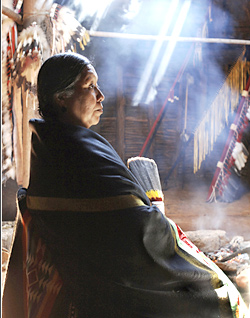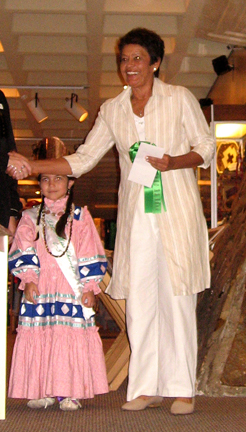Beadwork artists

- Tahnee Ahtone, Kiowa/Muscogee/Seminole [1]
- Richard Aitson (1953–2022), Kiowa/Kiowa Apache
- Martha Berry, Cherokee Nation
- Les Berryhill, Yuchi/Creek, bead artist
- Vanessa Jennings, Kiowa/Kiowa Apache/Pima, beadwork artist, regalia maker, and tipi maker
- Lois Smoky Kaulaity (1907–1981), Kiowa beadwork artist and painter (one of the Kiowa Six)





